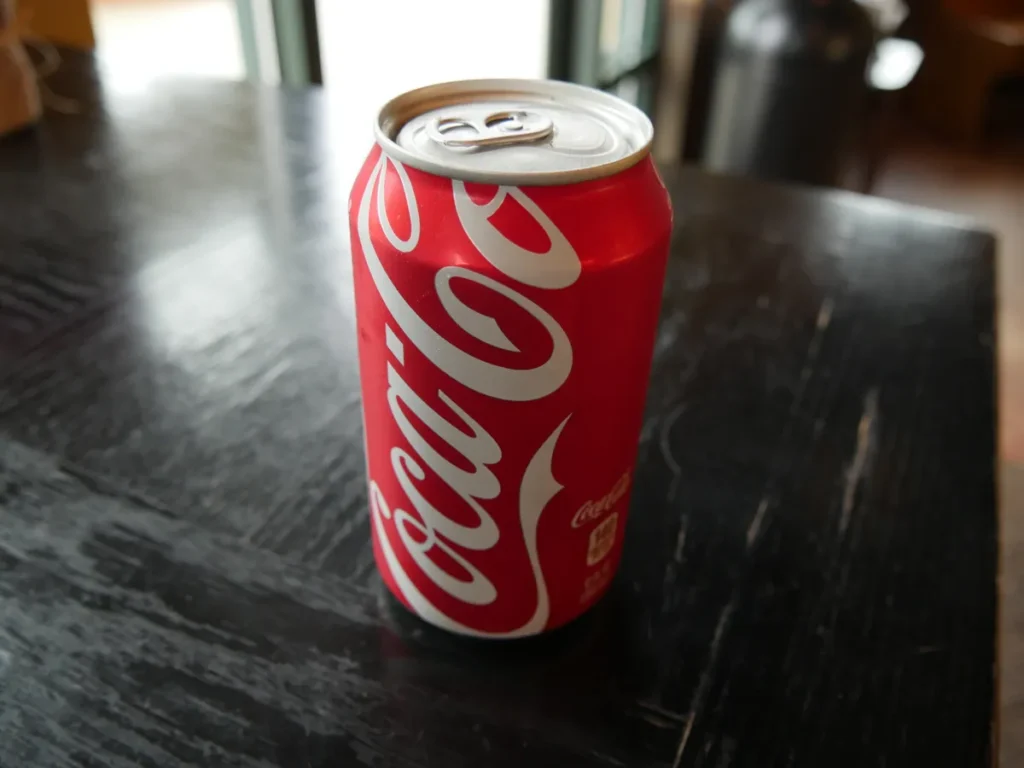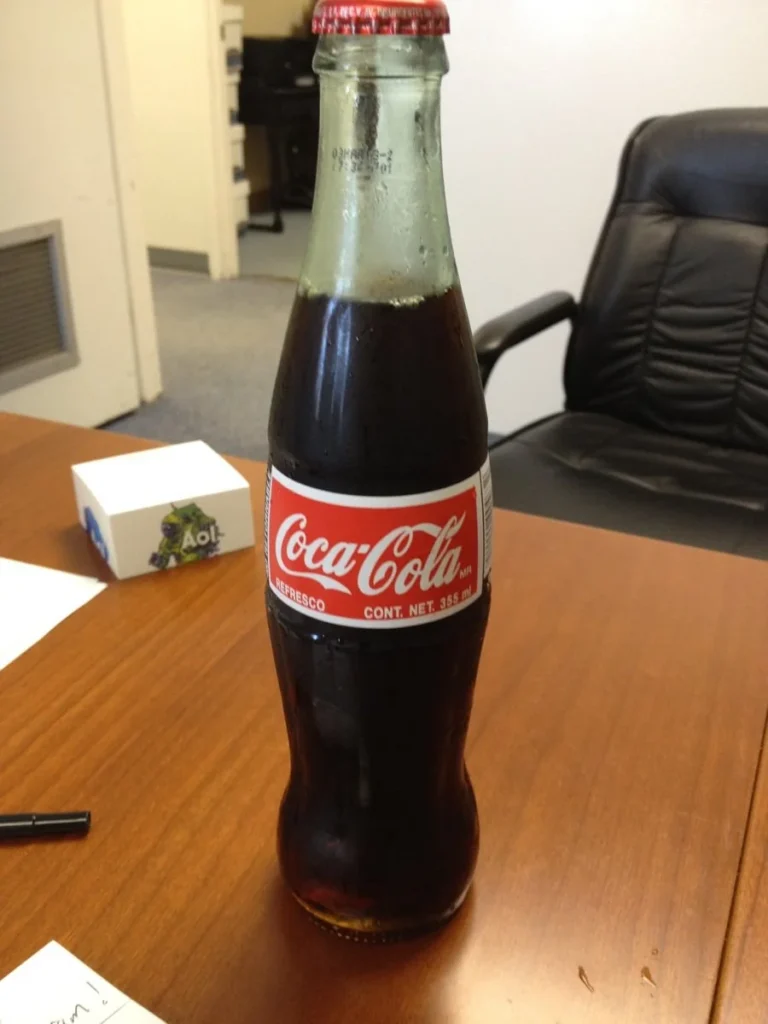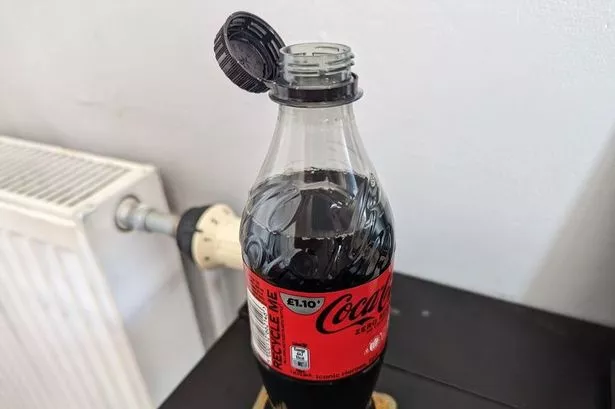After opening a bottle or can of Coke, its carbonation and flavor are at their peak for about 24 to 48 hours. During this time, the beverage retains its characteristic fizziness and taste. However, as time passes, especially if left unsealed or exposed to air, the carbonation diminishes gradually. While it’s safe to consume Coke beyond this window, the quality may decline, resulting in a flatter taste.
To enjoy Coca-Cola at its best, it’s recommended to consume it shortly after opening. Storing it in a sealed container in the refrigerator can help prolong its freshness, but the vibrant fizziness tends to diminish over time.
What Are The Factors Affecting Shelf Life?

The shelf life of items is affected by how they’re sealed and where they’re kept. Proper sealing and suitable storage conditions are key to keeping things fresh for a longer time.
The Role of Sealing and Exposure to Air
Sealing Mechanism
Proper sealing is essential to preserving the characteristics of opened Coke. A securely tightened cap or resealable lid helps maintain the beverage’s freshness.
The carbonation, which contributes to the signature fizziness, is retained when the container is adequately sealed, preventing premature loss.
Air Exposure and Oxidation
When Coke is exposed to air, a natural process called oxidation occurs. Oxygen interacts with the ingredients in the beverage, potentially altering its flavor and aroma.
Oxidation can lead to subtle changes in the taste profile, making the Coke gradually lose its original appeal over time.
Impact on Carbonation
A tight seal plays a crucial role in preserving carbonation, a key element of Coke’s sensory experience.
The slow escape of carbon dioxide is inevitable after opening, but a good seal minimizes this process, allowing consumers to enjoy a fizzier beverage for a more extended period.
The Impact of Temperature on Coke’s Longevity
Ideal Storage Temperature
Storing opened Coke in the refrigerator is recommended. The cooler temperature slows down chemical reactions and microbial growth, contributing to prolonged freshness.
Refrigeration helps maintain the beverage’s original taste, preventing it from degrading too quickly.
Temperature Fluctuations
Frequent temperature changes can accelerate the aging process of opened Coke.
Fluctuations between warm and cool environments lead to the expansion and contraction of the liquid, potentially compromising the integrity of the carbonation and flavor.
Chemical Reactions
Temperature influences the speed of chemical reactions. Higher temperatures can expedite processes like oxidation and the breakdown of certain compounds.
By storing Coke in a consistently cool environment, consumers can slow down these reactions, preserving the beverage’s quality.
Avoiding Extreme Heat
Extreme heat poses a particular risk to opened Coke. Leaving it in a hot car or exposed to direct sunlight can accelerate chemical reactions and spoil the beverage more rapidly.
Consumers are advised to avoid exposing Coke to extreme heat conditions to ensure a longer shelf life and better taste.
How does the quality of Coke change over time?

Over time, the quality of Coke changes as carbonation gradually diminishes after opening, impacting its bubbly texture. Additionally, the taste may evolve beyond the optimal period, introducing subtle variations in sweetness and acidity.
Gradual Loss of Carbonation
Carbonation Dynamics
Carbonation is a defining feature of beverages like Coke, contributing to their effervescence and refreshing quality.
Over time, carbonation naturally dissipates after opening due to the escape of dissolved carbon dioxide. This process is influenced by factors such as temperature, pressure, and exposure to air.
Effect on Texture and Mouthfeel
The gradual loss of carbonation impacts the texture and mouthfeel of the beverage.
Initially crisp and bubbly, a Coke with diminished carbonation may feel flatter on the palate, affecting the overall sensory experience.
Role of Sealing in Carbonation Retention
The quality of the seal on the container significantly influences the rate of carbonation loss.
A well-sealed container slows down the escape of carbon dioxide, allowing the beverage to retain its effervescence for a more extended period.
How the Taste May Change Beyond the Optimal Period
Flavor Evolution
Beyond the optimal freshness period, the flavor profile of Coke can undergo subtle changes.
Factors like oxidation and the breakdown of certain compounds contribute to the evolution of taste, potentially resulting in a milder or altered flavor.
Sweetness and Acidity
The balance between sweetness and acidity, characteristic of fresh Coke, may shift as the beverage ages.
Gradual changes in the chemical composition can lead to variations in the perceived sweetness and acidity, impacting the overall taste.
Influence of Storage Conditions
Where and how Coke is stored plays a pivotal role in how its taste evolves over time. Exposure to extreme temperatures or prolonged periods of air exposure can hasten the degradation of flavors, emphasizing the importance of proper storage.
Consumer Preferences
Changes in taste are subjective, and individual preferences vary. Some may find aged Coke perfectly palatable, while others may prefer the freshness of a recently opened bottle.
Recognizing these variations in taste allows consumers to make informed decisions about when to consume their beverages for optimal enjoyment.
Safe Consumption Beyond Peak Period
While Coke may change in taste after the recommended period, it’s generally safe to drink due to its acidic nature inhibiting harmful microorganisms.
To ensure the best experience, consider practical tips like proper resealing, refrigeration, and sensory awareness to minimize quality decline.
Information on the Safety of Consuming Coke After 48 Hours
Microbial Stability
Coke is generally safe for consumption beyond the peak period due to its acidic nature, which inhibits the growth of harmful microorganisms.
While the taste may change, the beverage remains microbiologically stable, posing minimal health risks even after 48 hours.
Quality vs. Safety Balance
While the quality of Coke may decline over time, its safety remains relatively intact.
Consumers can use their judgment based on personal preferences and tolerance for changes in flavor when deciding whether to consume Coke beyond the recommended freshness window.
Visual and Olfactory Indicators
Examining the beverage for any signs of mold, off-putting odors, or unusual discoloration can provide visual and olfactory cues about its safety.
If Coke appears normal and smells acceptable, it is likely safe for consumption, emphasizing the importance of sensory evaluation.
Tips for Minimizing Quality Decline

Re-sealing Techniques
Properly resealing the container after pouring can significantly slow down the loss of carbonation and help maintain the beverage’s quality.
Utilizing airtight caps or lids and minimizing the exposure to air during resealing are effective strategies.
Refrigeration Best Practices
Storing opened Coke in the refrigerator, ideally at a consistent temperature, helps preserve its quality.
Refrigeration slows down chemical reactions, including oxidation, contributing to a longer-lasting and fresher-tasting beverage.
Avoiding Temperature Extremes
Shielding Coke from extreme temperatures, both hot and cold, is essential for minimizing quality decline.
Extreme heat can accelerate flavor changes, while freezing temperatures may alter the beverage’s texture.
Consumption Preferences
Personal preferences for carbonation levels and taste variations allow consumers to make informed decisions.
Some individuals may find aged Coke enjoyable, while others may prefer it at its freshest, guiding choices about consumption timelines.
Sensory Awareness
Developing sensory awareness through sight, smell, and taste enables consumers to assess the quality of opened Coke.
Regularly evaluating these sensory aspects empowers individuals to make decisions aligned with their preferences.
FAQ
How do you know if Coca-Cola has gone bad?
Coca-Cola rarely goes bad, but if it does, you might notice an off smell, unusual taste, or mold growth. Always trust your senses for indicators of freshness.
Can you drink leftover Coke?
Yes, you can drink leftover Coke if it’s within the safe period, usually a few days. Pay attention to changes in taste and carbonation for an enjoyable experience.
Can I drink 40-year-old Coca Cola?
Drinking 40-year-old Coca Cola is not recommended. Over time, its quality significantly deteriorates, affecting taste and safety.
What can I do with leftover Coke?
Leftover Coke can be used for cooking, marinating, or as a cleaning agent due to its acidity. Get creative and explore different uses to avoid wastage.
How long can you save Coke?
Coke can be saved for an extended period, but its quality declines over time. For the best experience, consume it within 24 to 48 hours of opening.
Final thoughts
In conclusion, the freshness of Coke after opening is at its peak for about 24 to 48 hours. While it remains safe to drink beyond this period, the best experience comes from enjoying it within the recommended time frame. Remember to seal it well, store it properly, and savor the fizzy delight for a satisfying refreshment.

